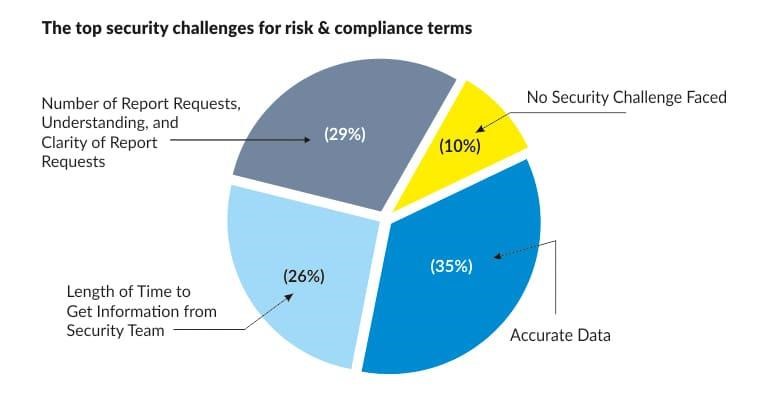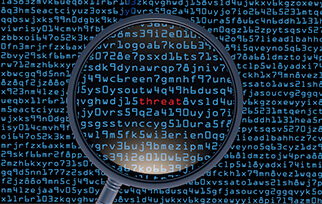Cybersecurity is a major topic of discussion in 2024. Due to increasing digitization of businesses, the risks to security are also becoming monumental. Therefore, all ventures are on the look-out for concrete cybersecurity solutions to protect sensitive data from potential threats.
However, without a specific GRC framework, the efforts to implement security measures are futile. GRC stands for Governance, Risk, and Compliance. It refers to holistic guidelines and procedures to identify, assess, manage and mitigate risks while providing the reassurance that these guidelines adhere to the regulatory compliances and industry standards.
Alignment of these cybersecurity strategies with the objective of the organization is vital to develop a functional GRC solution, or framework.
A Brief About Governance Risk and Compliance Solutions
GRC is more than just a buzzword; it's a comprehensive approach that connects IT with organizational objectives, tackles risks proactively, and works on regulatory adherence. This framework serves as a guide for companies to navigate the complex landscape of cybersecurity threats and evolving regulations

The image mentioned above depicts top security challenges for risk and compliance teams.
The effectiveness of governance risk and compliance solutions stems from its capacity to identify potential hazards, establish robust risk management protocols, implement compliance standards, and enhance transparency. It provides a clear overview of the business environment, enabling informed decision-making, effective IT and security risk management, cost reduction, and regulatory compliance.
Risk management aids in identifying vulnerabilities in any part of the network system which can act as entry points for unauthorized access or malware, assessing probable damage in case of a breach and eliminating potential threats by automating responses and actionable approaches.
Compliance ensures the framework strategies comply with regulatory laws and industry standards to avoid legal consequences and maintain customers’ and investors’ trust. The role of GRC in cyber security is to provide a framework for organizations that repels security threats, enhances cyber resilience and protects valuable resources.
How to Develop Comprehensive GRC Frameworks?
- GRC frameworks enable organizations to synchronize security tools with the ideals of the business as well as with the regulatory compliances laid down by HIPPA and GDPR. GRC or any other cyber risk management solutions bring a structured approach to handling IT and security threats and simultaneously cutting down costs and improving capacity to take actionable approaches.
To develop an effective GRC framework one must be aware of all the procedures that must be undertaken to assess the needful tools:
- Alignment: An important first step to ensure the company's security system aligns with its adaptability and growth plans. Without proper alignment, undertaken cybersecurity measures can be too lax or too strict, exposing the organization to hinder business operations and innovation.
- Assessment: The existing security measures must be assessed to find out potential vulnerabilities and its effectiveness against emerging cyber threats. This provides an idea of the current state of the security system and what changes must be made to ensure strong and well-rounded defense against cyber-attacks.
- Remediation: Using the findings from the assessment phase to strengthen cybersecurity strategies. This can include everything from adopting new technologies to reviewing policies and implementing more robust employee training programs.
As per experts at governance risk and compliance services, advanced tools can play a key role in this three-pronged approach by simplifying compliance through automation and keeping data secure through comprehensive monitoring of cybersecurity measures. In other words, they not only facilitate compliance, but also enable a secured organizational framework.
Advanced GRC Tools to Enhance Cyber Resilience
- Financial Audits: Conducting thorough financial audits to establish the implementation costs of appropriate security measures that will work for a specific business is essential to research tools and services that fits the budget and needs of the organization.
- IT Security Protocols: IT Security Protocols that establish the necessary guidelines and procedures to be followed by the organization’s IT teams and security systems to prevent data breach.
- Access Controls: Implementing proper IAM (Identity and Access Management) tools to preserve user identities and prevent unauthorized access to sensitive data.
- Risk Management Policies: Automated risk management tools must be competent with consistent monitoring, identifying, responding to or blocking potential threats by utilizing threat intelligence and data detection and response systems as per the business needs.
- Compliance Checks: The established guidelines must be in compliance with the regulations laid down by the standard industrial authorities such as the GDPR, HIPAA, or the PCI-DSS. Consistent compliance checks prevent legal consequences and maintain trust within the organization.
- Incidence Response: In case of a security breach, the GRC security tools must be equipped to reduce dwell time and initiating swift action by limiting damage and blocking off the impacted system from the network.
Governance Practices for Stronger Cybersecurity
Governance involves policies, procedures and structural guides that oversee cybersecurity within an organization. The primary goal of governance is to establish clear roles and responsibilities, define objectives and ensure accountability at each level.
Ventures assign different roles to IT teams, executive members and employees in view of securing the sensitive company data. It makes sure penalty stringent laws in compliance to industry standards are laid down against breach at any level. Periodic reviews of compliance help in the smooth functioning of the GRC framework which in turn, builds strong cyber resilience.
Risk Management Strategies for Enhanced Cyber Resilience
Governance risk and compliance services also cover risk management that is the essence of an effective GRC framework. Implementing advanced technological tools for automatic identification, evaluation and elimination of potential cyber threats and vulnerabilities of a system.
Analyzing crucial factors such as susceptible entry points in network systems, poor access management and competency of detection and response systems against evolving threats of the organization. Risk management aids in relaying the probabilities of a security breach, its impact on operations and the cost of implementing security measures.
Ensuring Compliance in a Dynamic Regulatory Environment
Compliance to industry standards and regulations laid down by the GDPR (General Data Protection Regulation) and HIPAA (Health Insurance Portability and Accountability Act) or the PCI-DSS (Payment Card Industry Data Security Standard) refers is imperative while laying down any type of cybersecurity system in your network.
Ignoring these compliance requirements will invariably be followed by legal action and breach in customer trust tarnishing the overall image of the organization.
Also, ensure compliance to
- SOC 2 Type II Compliance
- ISO 27701 Compliance
- CPRA Compliance
- ISO 27001 Compliance
These industry standards provide appropriate framework guidelines for maintaining data privacy, security and operational excellence. Here, seeking assistance from governance risk and compliance solutions providers are recommended.
GRC Operational Principles
The GRC framework or GRC solutions of an organization works on principles of transparency, accountability and consistency.
- Transparency: implementing cybersecurity guidelines and procedures and ensuring the procedure is known and understood by stakeholders and key employees foster a sense of transparency and strengthens trust within the organization.
- Accountability: The vitality of setting obligatory responsibilities for people at all levels ensures diligent and seamless operations leading to strengthened cyber resilience.
- Consistency: The application of security measures to consistently examine, detect and manage potential threats helps in elimination of vulnerabilities and reduction of gaps in cybersecurity.
Protect Data and Critical Information with Cybalt’s GRC Solution
Cyber resilience brings business continuity, security solutions and organizational resilience together. It is an organization’s ability to bounce back from a potential cyber attack and continue operations despite the circumstances.
The ability to manage and limit destruction of resources in case of a breach in an organization is a strategic process that requires time, effort and a thorough knowledge of the cybersecurity landscape. GRC solutions by Cybalt covers relevant guidelines, procedures and strategies to build resilient security systems. It establishes multitudes of automated tools for assessment, identification and management of security threats.
Our GRC frameworks are unique for each organization and are built in accordance with their specific requirements and budget criteria. We understand the importance of assessing your financial limits and potential vulnerabilities in order to establish appropriate GRC strategies.
Other Blogs

From Nuclear Centrifuges To Machine Shops: Securing IoT
IoT or ‘the internet of things’ has been around for a lot longer than the buzzword
Read More


Demystifying XDR
As the capabilities of threat actors have increased so have the tools which we utilize to detect and respond to their activities.
Read More


Cybersecurity In A Post Pandemic World
As many cyber security practitioners will tell you, the most imminent and dangerous threat to any network are the employees accessing it.
Read More


